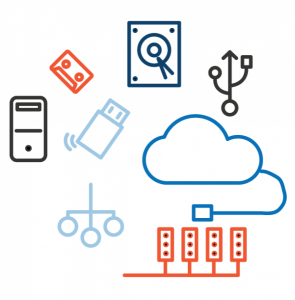 Is your firm due for a software upgrade? If you’re not sure, why not conduct a technology audit? Technology, including legal software, plays a big part in ensuring that your firm runs smoothly on a day-to-day basis. The right tools can make all the difference, and outdated technology can lead to redundancies and time-consuming inefficiencies that result in lost productivity. This, in turn, can affect your firm’s bottom line.
Is your firm due for a software upgrade? If you’re not sure, why not conduct a technology audit? Technology, including legal software, plays a big part in ensuring that your firm runs smoothly on a day-to-day basis. The right tools can make all the difference, and outdated technology can lead to redundancies and time-consuming inefficiencies that result in lost productivity. This, in turn, can affect your firm’s bottom line.
When it comes to an audit, it’s not always easy to figure out where to start, and ascertaining which systems to upgrade is never an easy decision. When making this assessment, a thorough understanding of your firm’s needs and daily operations is crucial, but it’s also helpful to learn about the steps other law firms are taking to upgrade their firm’s technology. That’s where the ILTA 2019 Technology Survey comes in. The full survey will be released in late October 2019, but in the meantime, the Executive Summary is currently available here and offers lots of great insight into the legal technology focus and spend of firms large and small. Without further ado, here are some of the more interesting results.
For starters, one notable trend was an increased interest in the use of cloud computing software by responding firms, with 72% of firms sharing that that their use of cloud computing software would increase in the coming year. As explained in the summary of the Survey, these findings comported with the overall 4-year trend that has shown an increase in the adoption of cloud-based tools.
When respondents were asked to identify a technology that would “create significant change or be a major factor in the legal technology profession,” the top response was cloud computing, with 39% of respondents choosing it. Some of the main areas where firms reported that they were most likely to use cloud computing software were document management systems (DMS), and time and billing. 27% of firms had already moved their DMS to the cloud and 31% had plans to do so within a year. And 14% of firms reported that their time and billing systems were cloud-based, with 17% planning to move to cloud-based legal billing software by next year.
Another trend of interest that was not unexpected was that responding firms reported that a top successful technology implementation at their firm over the past few years had been to incorporate mobile technologies into their firms. Specifically, the survey respondents chose “improving mobility and the security needs that come with mobility” when asked for feedback regarding which recent technology project had had been particularly impactful at their firms.
Responding firms were also asked to identify “the top three technology issues or annoyances within your firm.” The difficulties associated with adapting to change appeared as an answer in 3 of the top 4 responses. Specifically, 37% percent cited “Change: users acceptance of change” as the top issue. 28% of respondents also cited “Change: keeping up with new versions of software,” while another 28% percent of respondents cited “Change: managing expectations (user and management).”
Finally, responding firms were asked to answer the following question relating to their future plans: “Thinking about the next three to five years, is there a technology or trend you believe will create significant change or be a major factor in the legal technology profession?” Some of the top responses were cloud computing (39%), artificial intelligence (37%), and automation (9%). And speaking of artificial intelligence, when firms were asked about their current strategy on Artificial Intelligence/ Machine Learning, 20% of firms reported that they were using or testing A/I and another 25% were in the process of researching it.
How does your firm’s technology roadmap compare? Is your firm in the cloud or planning to make the move soon? What about mobile technologies or A/I? If you’re not sure, then conduct a technology audit and then download this FREE guide, “Choosing the Right Technology for Your Firm.” In no time, your firm will be well on its way to upgraded technology and a more streamlined and profitable future.
Editor’s Note: This article is published with permission of the author with first publication on mycase.
